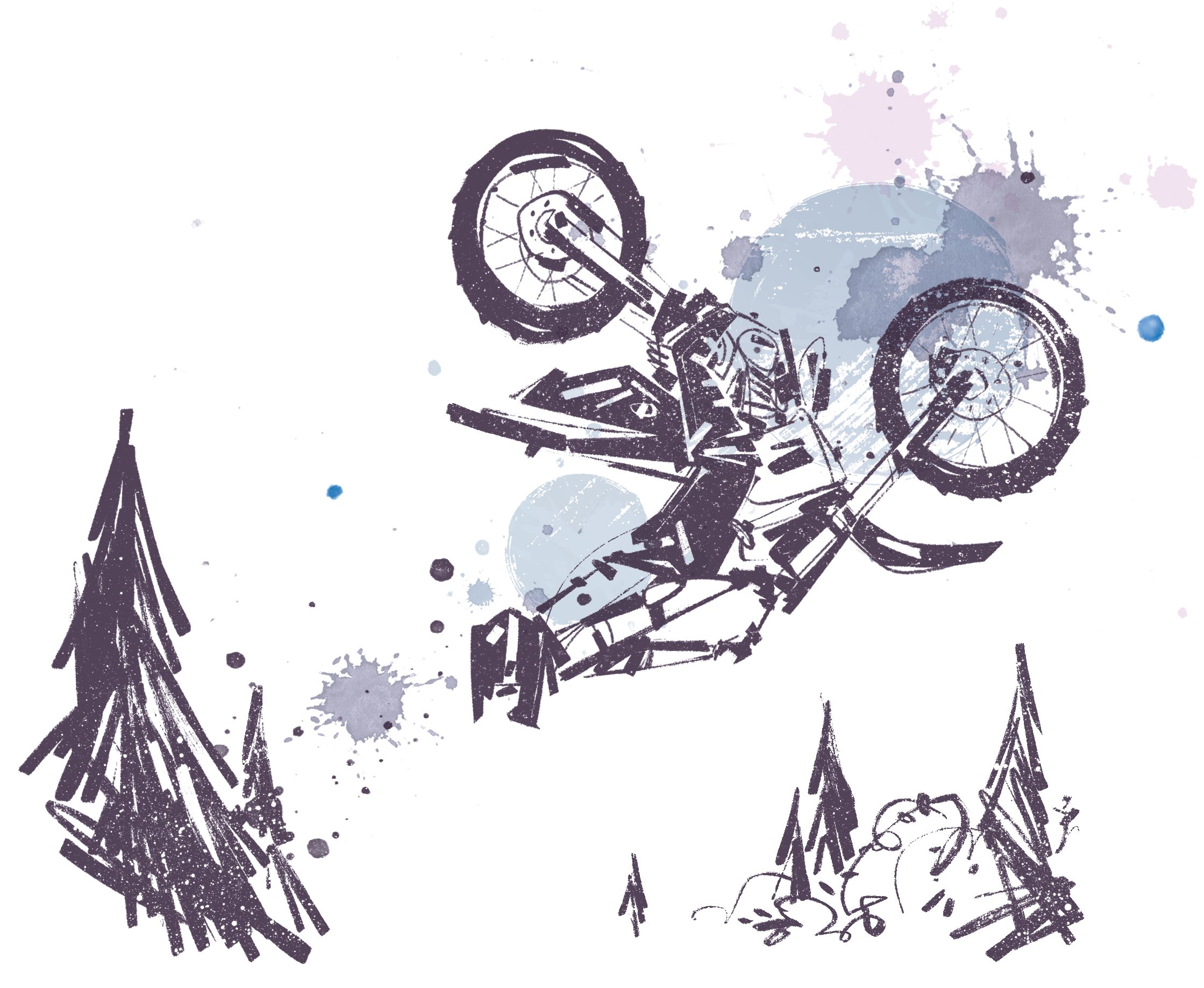Summer 2000
GRAVITY GAMES, PROVIDENCE, RHODE ISLAND
The day of the freestyle final at Gravity Games, the stands were packed. Hart remembers being a mess. Each time the start order circled back to him, he would just ride around the course, hitting jumps but not doing anything. Brian Deegan sat atop the leaderboard.
“I went to Gravity with the sole purpose of doing a flip and hopefully not killing myself,” Hart said. “I planned to do it on my last run, so my first one or two runs were a disaster.”
Lavin, who had just won the BMX dirt contest, helped Hart dig out a run-in on the backside of one of the landings. “I built him a BMX lip for the jump,” Lavin said. “I wanted to make sure that he got around. We weren’t positive that a dirt bike would get around yet.”
Lavin said he also warned Hart not to hit it in second because it was going to send him to the moon. Hart insisted that he wanted to go as high as he could because he was nervous that he wouldn’t clear the rotation.
On his final run, Hart almost looked like he was just going to ride around the course again and not doing anything. Finally, he aimed his bike at the takeoff that he and Lavin had just built. He accelerated up the face in second and committed to the rotation. He went huge, overshot the landing, and his body blew off the back of the bike. Still, the wheels touched down and hung on briefly. He claimed it by throwing his arms in the air, and the crowd went wild.
With so much adrenaline, Hart didn’t realize that he had compressed a vertebra and pulled some ligaments in his lower back—an injury that would bother him for the next 20 years.
“As far as I’m concerned that was the first backflip on a dirt bike,” Lavin said. “Nobody knew it was possible, except for him. He opened up that channel for everyone who came after him, and now they all knew it was possible.”
Hart’s name was now synonymous with the backflip, but it also opened up a whole can of worms. Since he didn’t ride away clean, it left the door open for someone to still be the first to technically land it.
“There was this black cloud over me for the next few years, because it was just constant chatter of the flip,” Hart said. “The pressure was brutal.”













